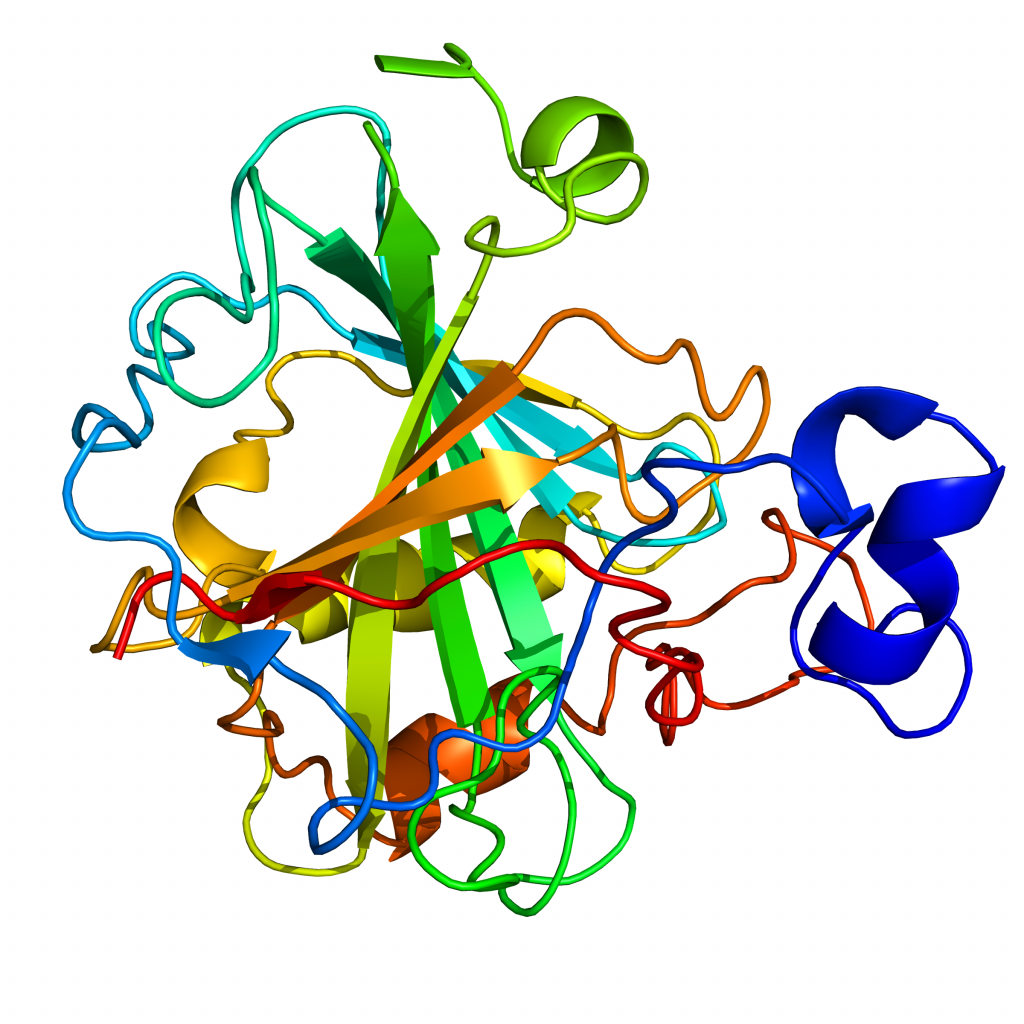Additional information
| Shipping in Dry Ice | yes |
|---|---|
| Labeling | 15N |
| Qty | 1 mg, 5 mg, 10 mg |

630,00€ – 3.160,00€
Human, recombinant
Full length, UniProtKB accession P00918
MW = 29.1 kDa
CAT # G07CA201n
| Catalog n. | Labeling | Qty | Price |
|---|---|---|---|
| 630,00€ | |||
| 1.940,00€ | |||
| 3.160,00€ | |||
| VAT not included | |||
For any special request or bulk quantities Click Here
| Shipping in Dry Ice | yes |
|---|---|
| Labeling | 15N |
| Qty | 1 mg, 5 mg, 10 mg |
Description
MW = 29.1 kDa. Full length Carbonic Anhydrase II (Carbonate dehydratase II, Carbonic anhydrase C) cloned from human cDNA and expressed in E.coli. The protein consist of the human Carbonic Anhydrase II with a mutation Ser2Ala. (Swiss prot accession: P00918). Mass spectrometry (MALDI) showed that the first aminoacid (Met) is processed during the expression.
Sequence
10 20 30 40 50
MAHHWGYGKH NGPEHWHKDF PIAKGERQSP VDIDTHTAKY DPSLKPLSVS
60 70 80 90 100
YDQATSLRIL NNGHAFNVEF DDSQDKAVLK GGPLDGTYRL IQFHFHWGSL
110 120 130 140 150
DGQGSEHTVD KKKYAAELHL VHWNTKYGDF GKAVQQPDGL AVLGIFLKVG
160 170 180 190 200
SAKPGLQKVV DVLDSIKTKG KSADFTNFDP RGLLPESLDY WTYPGSLTTP
210 220 230 240 250
PLLECVTWIV LKEPISVSSE QVLKFRKLNF NGEGEPEELM VDNWRPAQPL
260
KNRQIKASFK
Purity
> 95% by SDS-PAGE. The protein is observed, in denaturing conditions, as a single band migrating at molecular weight at about 30.0 kDa.
Supplied as
2 mg/mL in Tris buffer 20mM pH 7.5, NaCl 150mM. The concentration is calculated by the analysis of the absorbance at 280 nm (ε280 = 54000 M-1cm-1).
Characteristics
Under the above described conditions, the product can be concentrated up to 1 mM.
Storage
-20°C. The protein is stable at 4°C for weeks and at 25°C for days. Avoid repeated freeze/thaw cycles.
References
Murakami, H., et al. Genomics. 1987 Oct;1(2):159-66.
Montgomery, J.C., Nucleic Acids Res. 1987 Jun 11;15(11):4687
Bertini, I., et al. J. Magn Reson B. 1994 Jul;104(3):230-9.
By continuing to use the site, you agree to the use of cookies. more information
The cookie settings on this website are set to "allow cookies" to give you the best browsing experience possible. If you continue to use this website without changing your cookie settings or you click "Accept" below then you are consenting to this.